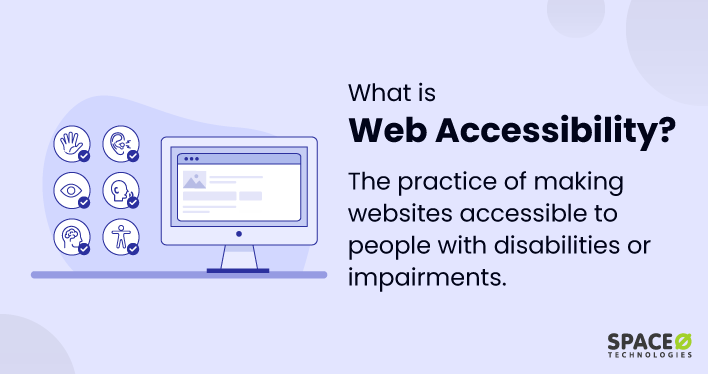Blitz News Digest
Stay updated with the latest trends and insights.
Web Accessibility: Making the Internet's Best-Kept Secret Public
Unlock the internet's best-kept secret! Discover how web accessibility can transform your online experience for everyone.
Understanding Web Accessibility: Why It Matters for Everyone
Web accessibility is the practice of ensuring that websites and digital content are usable by everyone, including individuals with disabilities. This principle is crucial because approximately 15% of the global population experiences some form of disability, whether it's visual, auditory, motor, or cognitive. By prioritizing accessibility, we not only comply with legal standards but also expand our audience reach. Moreover, accessible web design enhances user experience for all, as features like text alternatives, keyboard navigation, and clear layouts benefit everyone, not just those with disabilities.
Understanding web accessibility is not just a compliance issue; it is an ethical one as well. Creating an inclusive digital environment ensures that all users can engage with information and services without barriers. As technology integrates deeper into our daily lives, web accessibility becomes essential for fostering social equity and inclusivity. Companies that embrace accessibility often see improved customer satisfaction and brand loyalty. Therefore, implementing accessibility best practices is a win-win for both the users and the businesses that serve them.

Top 5 Myths About Web Accessibility Debunked
Myth 1: Web accessibility is only for people with disabilities. This is a common misconception, but the reality is that web accessibility benefits everyone. By designing for inclusivity, you create a better user experience for all visitors. For instance, older adults, people with temporary injuries, and those using mobile devices in challenging environments can also greatly benefit from accessible web design.
Myth 2: Implementing accessibility is too expensive and time-consuming. While it may seem daunting initially, integrating web accessibility into your design process can save you money in the long run. By adhering to accessibility guidelines from the start, you avoid costly revisions and potential legal issues later on. Moreover, with a multitude of resources and tools available, accessibility can be seamlessly integrated into any project's workflow.
How to Create an Accessible Website: Essential Guidelines and Tools
Creating an accessible website is essential for ensuring that all users, regardless of their abilities or disabilities, can access and benefit from your content. To get started, follow these essential guidelines: first, use clear and simple language to enhance readability. Additionally, ensure that your website is navigable using keyboard shortcuts, which is crucial for users who cannot use a mouse. Finally, provide alternative text for images, ensuring that visually impaired users can understand the information conveyed through visuals.
Utilizing the right tools can greatly enhance your efforts in achieving web accessibility. Consider integrating accessibility evaluation tools such as WAVE or Axe to identify potential issues in your site's design. Moreover, engaging with your users through feedback can provide valuable insights into their experience. By adhering to the Web Content Accessibility Guidelines (WCAG) and implementing these tools, you can create a more inclusive online environment for everyone.